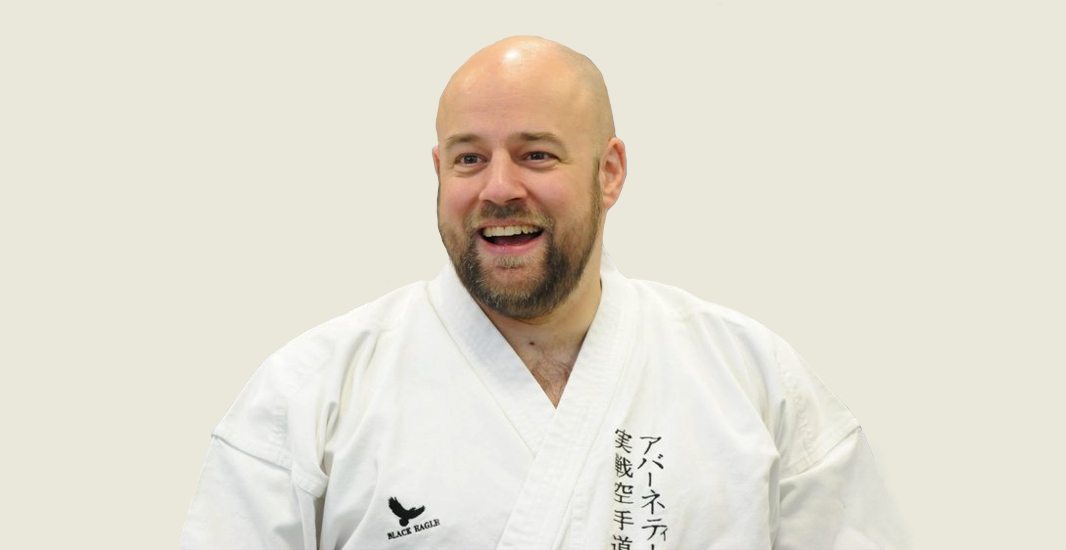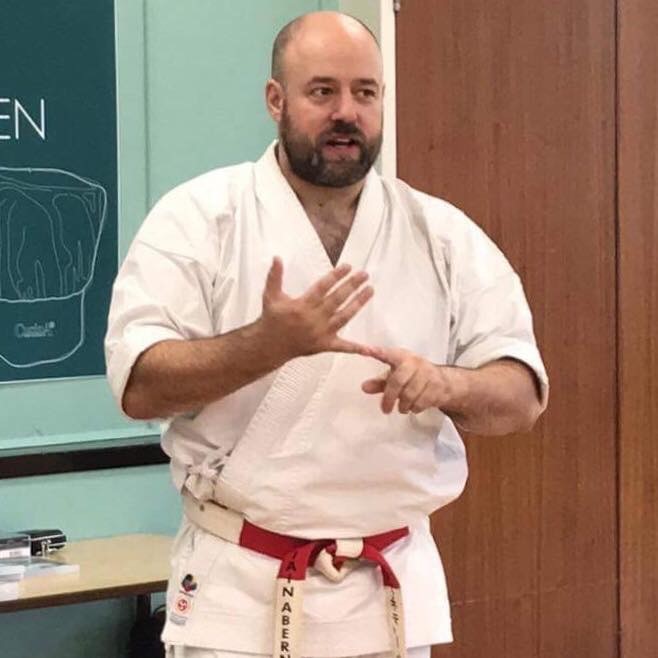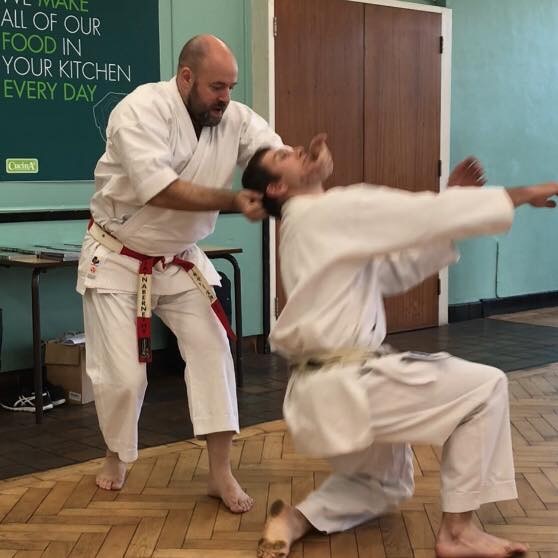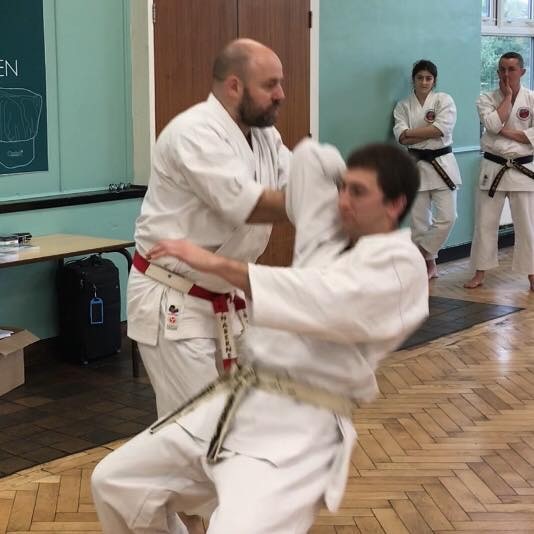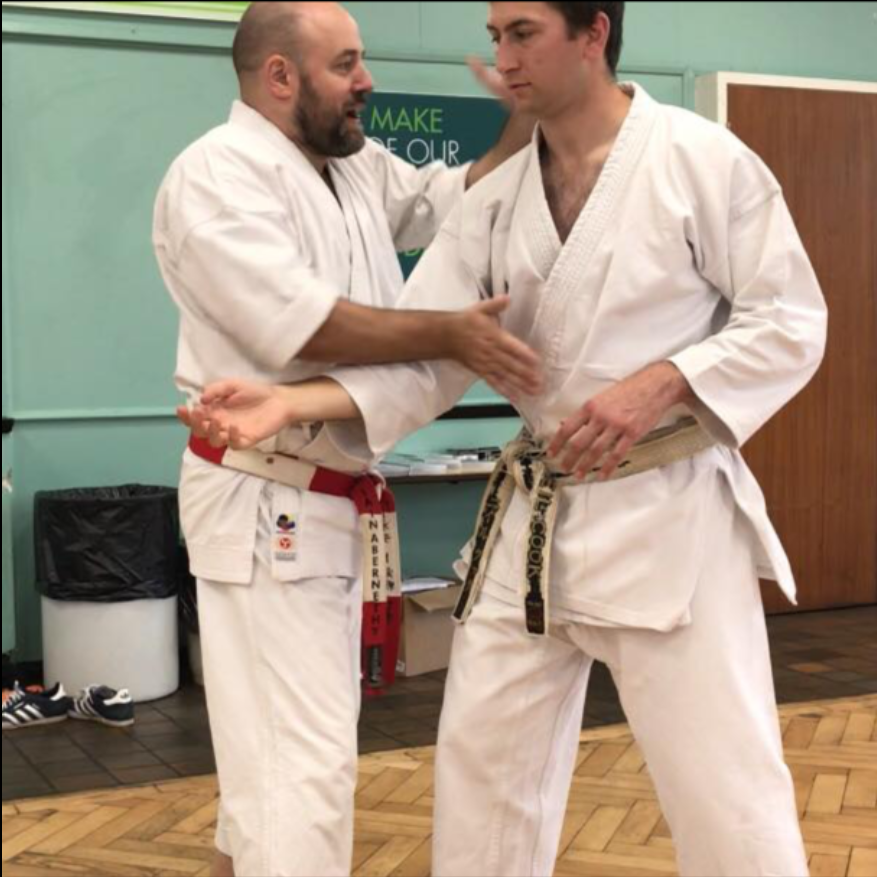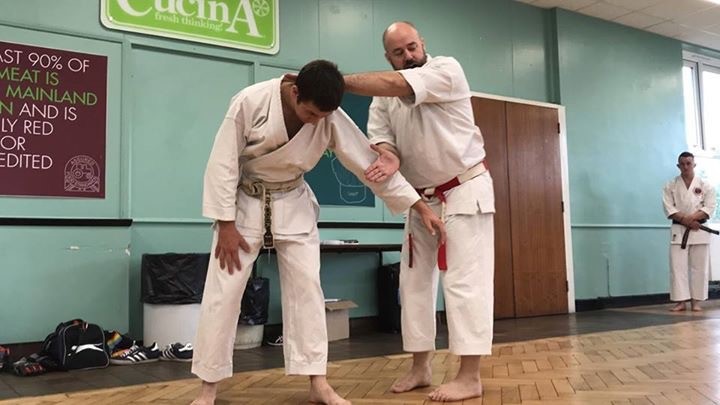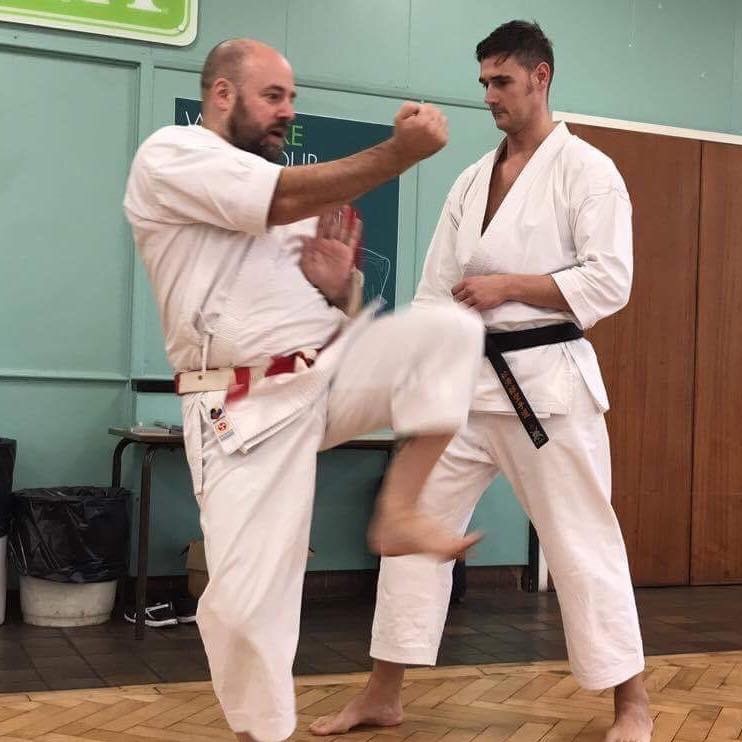With the forthcoming visit of Abernethy Sensei, I am publishing again a 2017 post about a seminar held back then with Iain… Cannot wait !
Reporting back from Bushey, Watford, following a seminar aiming at highlighting similarities between kata and their applications across the many styles of karate, i.e. Shotokan, Wado, Goju… The seminar was attended by approximately 60 students and led by Iain Abernethy, a leading exponent of applied karate.
Overall, a very entertaining and informative afternoon, full of anecdotes, going through a multitude of kata techniques and their possible applications – take-downs, chokes, arm lock, etc.. An excellent opportunity to meet and exchange with other practitioners (thanks to Paul, my partner for the day) from other schools and together, work on the premise that, there are not many styles of karate, rather multiple interpretations of the same underlying principles. Great stuff!
A big thank to Abernethy Sensei and also Doug Connell from Shogun Practical Karate for organising this event.
Below, a few thoughts and photos of the day:
“If you find yourself in a fair fight, your tactics suck.” (John Steinbeck)
“A student well versed in even one technique will naturally see corresponding points in other techniques. A upper level punch, a lower punch, a front punch and a reverse punch are all essentially the same. Looking over thirty-odd kata, he should be able to see that they are essentially variations on just a handful.” (Gichin Funakoshi)
“Spirit first, technique second.” (Gichin Funakoshi)
“There is no place in contemporary Karate for different schools. Some instructors, I know, claim to have invented new and unusual kata, and so they arrogate to themselves the right to be called founders of “schools”. Indeed, I have heard myself and my colleagues referred to as the Shotokan school, but I strongly object to this attempt at classification. My belief is that all these “schools” should be amalgamated into one, so that Karate may orderly progress into man’s future.” (Gichin Funakoshi)
“One must not lose sight of the fact that karate is “all-in” fighting. Everything is allowed… This is why karate is based on blows, delivered with the hand, the foot, the head or the knee. Equally permissible are strangulations, throwing techniques and locks.” (H.D. Plee, 1968, “the Father of European Karate”)
“Many years ago I was introduced to a “hierarchy of effectiveness” […] presented as a pyramid, with the most important things at the base and the less important things higher up. The order given (base to top) was: Mind Set ; Strategy ; Tactics ; Technique. As important as technique is, mind set and strategy are more important. The criminal has learnt this through direct experience. The moral martial artist needs to understand this too so that their self-protection training also emphasises mind set and simple strategy.” (Iain Abernethy)
“Once a form has been learned, it must be practised repeatedly until it can be applied in an emergency, for knowledge of just the sequence of a form in karate is useless.” (Gichin Funakoshi)
“Recently, some Karate men have used funny and strange sounding names for their own styles of Karate. A Karate man of this kind does not have a real understanding or knowledge of the orthodox Karate or he has no confidence in his ability as a Karate man. He uses these funny sounding names for his own style of Karate as an evasive answer when he has a hard time demonstrating a very difficult technique or even an incomplete one. […] Karate does not have any one style. Karate molds an individual to be the only object of defense or offense and, through this, it teaches the fundamental concept of self-protection.” (Kanken Toyama)

